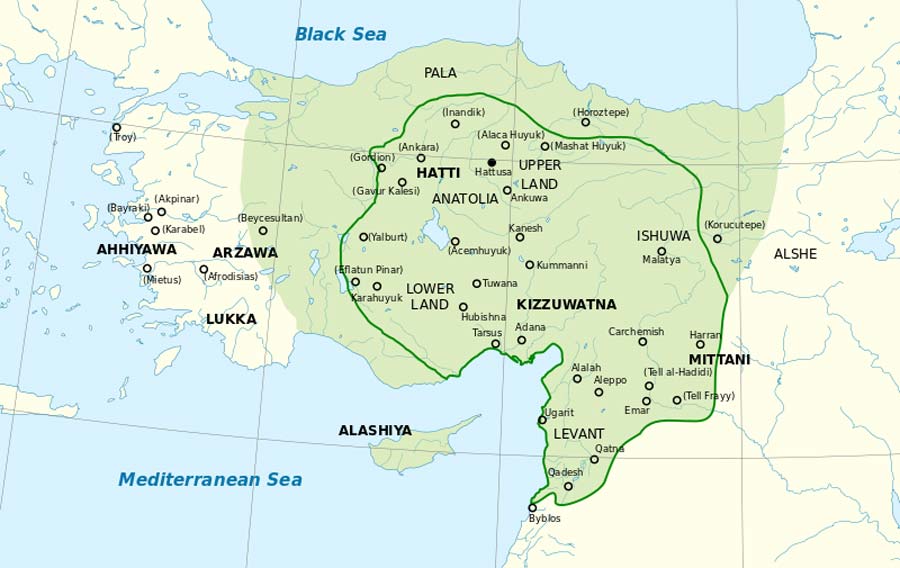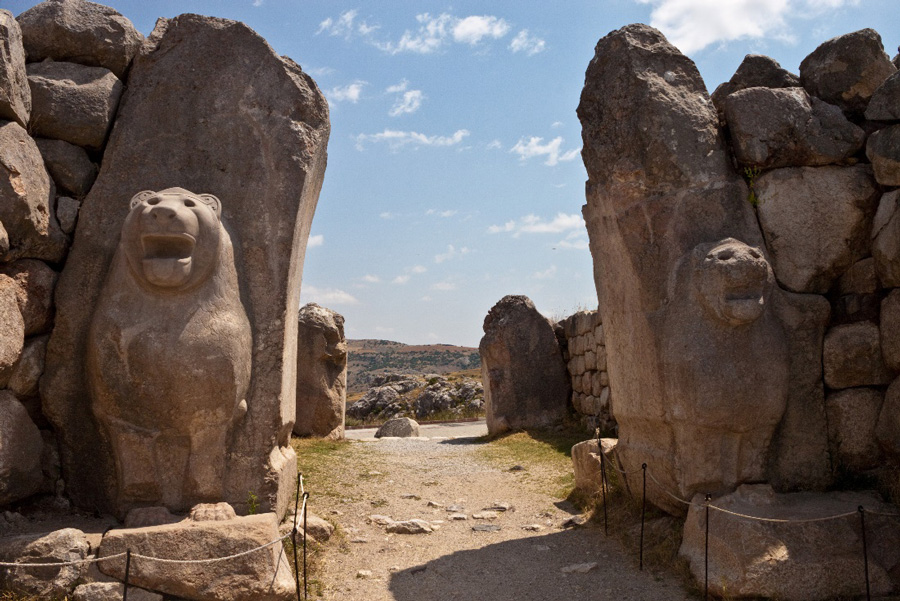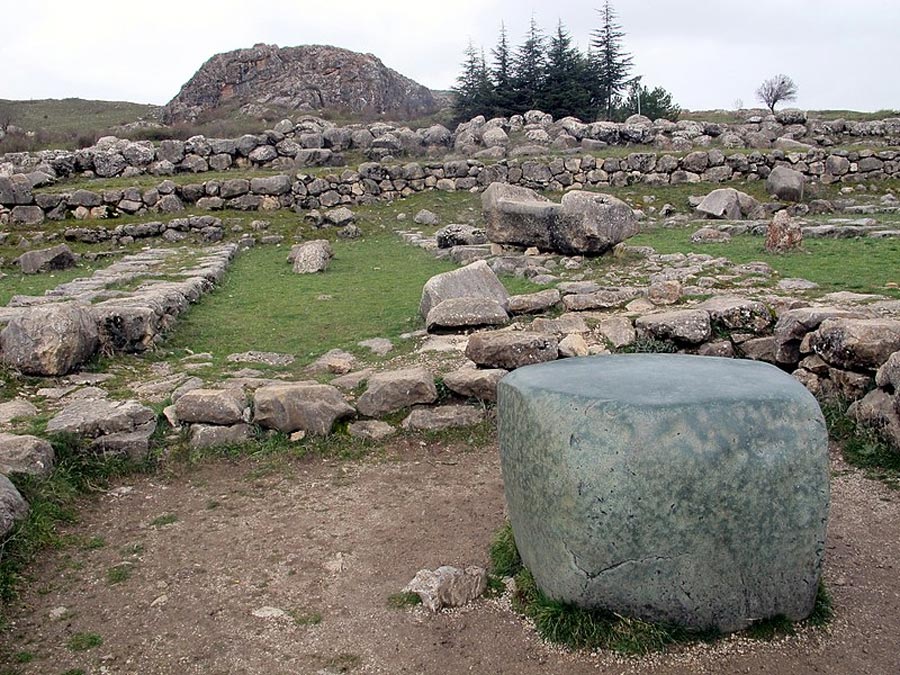In 1833, an archaeologist from France names Charles Texier lead a archaeological expedition in northern Turkey, near the city of Corum. The area was mountainous and inhospitable, but what he found there was almost unbelievable.
Here, in the middle of nowhere and far from the fertile plains to the south, was a great city. Texier had located the ruins of Hattusa, the massive capital of the Bronze Age Hittite empire, one of the most powerful and mysterious civilizations in Anatolian history.
Much of the city was still standing. Above a carefully organized street plan stood well-preserved royal residences, fortifications, and temples. Huge entryways flanked by stone lions stood in a massive stone curtain wall.
Beautiful carvings in the living rock could be found at the nearby sanctuary of the city, known as Yazilikaya. Here at last was the 2nd millennium BC capital of one of the largest Bronze Age empires in history.
The Hittites And The Founding Of Hattusa
The city dated back to at least 2,000 BC. At that time, the Hattian people started establishing a permanent settlement at the Hattush site, although there is evidence the area had already been occupied for thousands of years.

These people created their first settlement on Büyükkale, a high hill with a ridge which stood above the surrounding landscape. By the 18th century BC the city was already a significant trading center despite its remote location. There is evidence of an Assur trading post and city quarter built in the Hittite city of Kanesh to the south, to connect Hattusa with the Assyrian empire.
Business dealings needed record-keeping, and the trade network introduced cuneiform writing to Hattusa. Today the Hittite clay tablets are the earliest surviving evidence of Indo-European written language. While it is uncertain how early the Hittites started interacting with neighboring civilizations, but the clay cuneiform tablets and letters date this to at least 1600 BC
But the Hittites were not always peaceful traders, and even the remoteness of Hattusa could not protect it from attack. A carbonized layer visible in excavations dated to around 1700 BC is testament to a successful attack during which much of the city was put to the torch.
A Bronze Age Giant
The Hittite empire rose to dominance between the middle and late Bronze Age, between the 14th and 12th centuries BC. By 1280 BC, the Hittite empire was large enough to negotiate a treaty with the Egyptians at Qadesh, a city in the Levant.
The Hittites at this time held a major influence over all of Anatolia, an empire that stretched from the Dardanelles to the northern part of Syria. It dominated all trade in this vast territory.

Yet comparatively little is known about the Hittites themselves. They were quite secretive by nature and little is known of their spiritual beliefs. They preferred to either cremate or hide their dead bodies, and only a few royal burial grounds are found to date, leaving modern archaeology with limited information compared to the wealth of knowledge provided by Egypt.
Perhaps the Hittites did not place as much emphasis on royalty. Evidence survives of a Hittite “Pankus,” or parliament, acting as a governing body alongside the ruler. This would appear to evidence a very early example of democracy, perhaps a factor in the success of the empire.
But, as with so many great civilizations, the Hittites did not survive the Bronze Age collapse in the 12th century BC. Infighting led to Hattusa being destroyed around 1180 BC, and their strong empire fragmented into independent Neo-Hittite city-states. All that was left of their grand capital was ruin.
A Magnificent Capital
Hattusa lies in Boğazkale a district in the province of Corum near the Turkish Black Sea coast. The location of the site made the city easily defensible, yet still within reach of the fertile plains near the Kızılırmak River.
The city was huge and sophisticated, with a royal palace, an open-air theater, and no fewer than 31 temples, all enclosed by monumental walls. Archaeological digs have also unveiled several hidden tunnels, which likely provided a safe haven for the people in time of crisis. The city was certainly advanced for its time.
Hattusa was divided into two parts: the lower city and the upper city. The lower part of the city held a Great Temple, the largest religious structure in the entire Hittite empire. Many smaller temples are found in the upper city, with evidence of elaborate decorations.
The upper city was entered through massive stone gateways, such as those dubbed the King’s Gate, and the Sphinx Gate standing opposite with its four original statues of human-headed, eagle-winged, lion-bodied creatures. However the finest example is doubtless the Lion Gate, named for the two lion reliefs on each side.

A further pair of stone sphinxes discovered at the Hattusa’s southern gate were taken to Germany for restoration purposes in 1917. In 1924, the well-preserved one was then returned to Turkey and was displayed in the Istanbul Archaeology Museum.
Despite reluctance from Germany, the second sphinx was also returned. Both have now been reunited and are today displayed in Bogazkoy Museum just outside the ruins of Hattusa .
More layers in the city are still to be uncovered and Hattusa remains an active archaeological site. The city was also declared a World Heritage Site by UNESCO in 1986.
The Great Temple Mystery
One of the most enduring mysteries in Hattusa today is the strange rock of the Great Temple, which attracts numerous tourists every day. The green glass-like stone at the complex of the Great Temple is perplexing, and its origin still remains unidentified.

It is thought to be created from nephrite or serpentinite. Even though such stones are actually not that rare in the area, the fact that they require significant maintenance makes them an unusual choice for the construction, testament to the cultural importance of the temple. Locals believe that the stone will grant wishes, but archaeologists have still not confirmed its actual purpose.
Another huge draw for tourists in the area is the Yazilikaya Temple. This open-air shrine consists of two cave temple chambers, the walls adorned with twelve Hittite gods and goddesses.
But most of the Hittite treasures found at Hattusa are too delicate to be left in place. The nearby city of Corum has an open-air museum containing many artifacts from the Hittite empire, not least the monumental sphinxes.
Top Image: Part of the great curtain wall has been reconstructed at Hattusa. Source: Attraction Art / Adobe Stock.
By Bipin Dimri